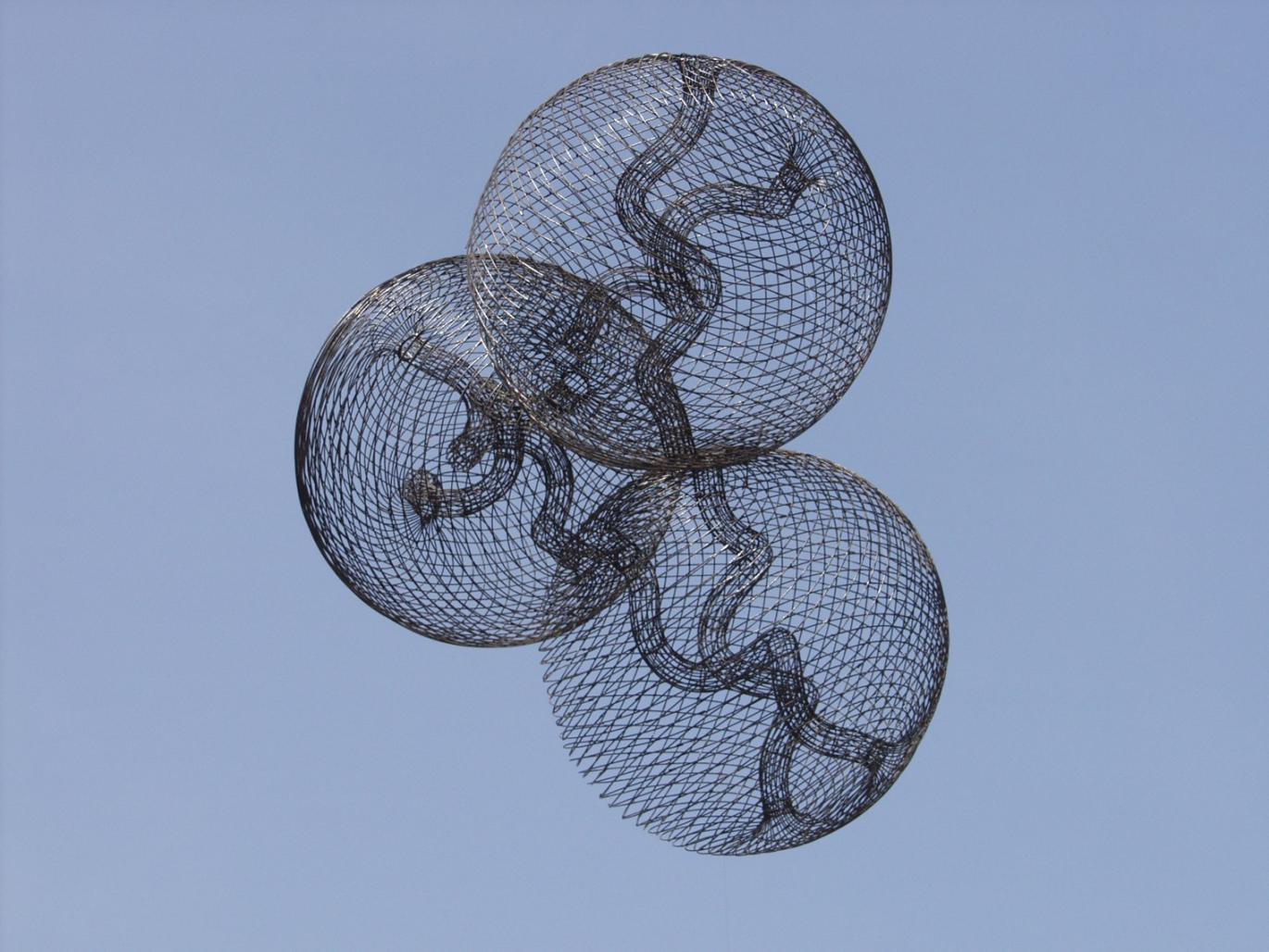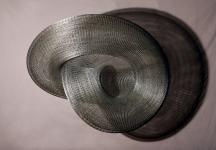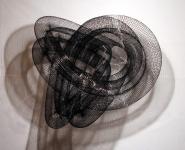Saken Narynov’s top-art.
Saken Narynov’s design work is characterized by organization of interdisciplinary dialogue.
The author explores the possibility of synthesis between art (architecture, sculpture, design), science (mathematics and physics) and structural symbolism.
Systematical familiarization with traditional and classical heritage allows to originally interpret the problems of functional skewness of human’s cerebral hemispheres, categories of binary oppositions (“good-evil”, “man-women”, “up-down”, “birth-death”, etc.).
Studying topology as a science and as an art stimulus plays and important role in ideological basis of the author’s longstanding art tendency.
In such a context, Saken Narynov’s design style, represented here, can be defined as top-art – and art of topology.
Topological objects are apprehended in action. In the process of surveying from different aspect angles, cellular structures begin to simultate (to exert influence upon the spectator simultaneously), creating an amazing impression of “resurgent forms”. In this way “dull geometry” visually demonstrates transformations of flat and more complex surfaces into bulk structures. Some structures are a kind of “instant snapshots” of ripple phases, development relatively simple surface into bulk structure.
Although paradoxical transitions from one surface to another are observed (or absence of such transitions, when they appear to be a visual illusion – in fact the surface is one-sided).
Thus strictly following the geometrical laws construction become expressive artistic objects.
Some works of Saken Narynov are created under the influence of impossibilism. In turn, Mr. Narynov greatly contributed into development of this school.
Such works as “Kazakhstan bottle” and “Narynov band” are original author’s interpretations of classical “Klein bottle” and “Mobius band”.
Saken Narynov’s works significance is proved by the comment of famous scientist Martin Gardner (USA), follower of A. Einstein:
“Martin Gardner”
110 Glenbrook Drive
Hendersonville
--
Dear Saken Narynov:
… Your model of two Klein bottles fused together, with entrance and exit holes, is very beautiful. As far as I know, no one has previously thought of doing this…”
1. Six lives of one soul.
Steel wire 0,7 x 0,7 x 0,6m. 1998 y.
In this complex topological model multiple transitions from outer (relatively to conjugated spheres) spaces into their inner spaces and the other way are put into effect. Artistic meaning of the transitions – “soul’s journey”, incarnated in different creatures (ant, human, bull…). The subject is oriental (referring to myths and traditions of the ancient India) and the formal realization – minimalistic, “western”.
Dexiotropic spiral symbolizes life, development. Beginning with the funnel on the outer surface of one of three conjugated spheres and ending in the inner space of neighboring sphere, “right” tunnel leads to discrete transition into left-handed spiral tunnel, which symbolizes aging and dying. This tunnel, in turn, leads to stick-slip transition through the outer surface of the neighboring sphere into the tunnel with “right” spiral, closing the cycle of reincarnations.
2. The end of the beginning or the beginning of the end.
Zinc-coated steel wire, 1 x 0,7 x 0,7m. 1998 y.
Interpretation of the concept of psychological Time and an attempt to show physical Time at different speeds and in different spaces.
3. Kazakhstan bottle (“Narynov bottle”)
1998 y.
Original interpretation of Klein bottle – one-sided self-contained topological object.
4.Parallel worlds.
Zinc-coated steel wire 2 ? 1 ? 1 m. 2001 y.
5. Space inside out.
Original: 3 x 3 x 2m. Reduced copy: 1 x 1 x 0,6 m. 1998 y.
Continuation of topological experiments with “pierced and turned inside out” torus. This solution never figured in the works of famous topologists, such as M. Gardner, J. Francis, S. Barr. Inner surface of one torus through the cylind
1991
2008




.jpg)
.jpg)

.jpg)
.jpg)
